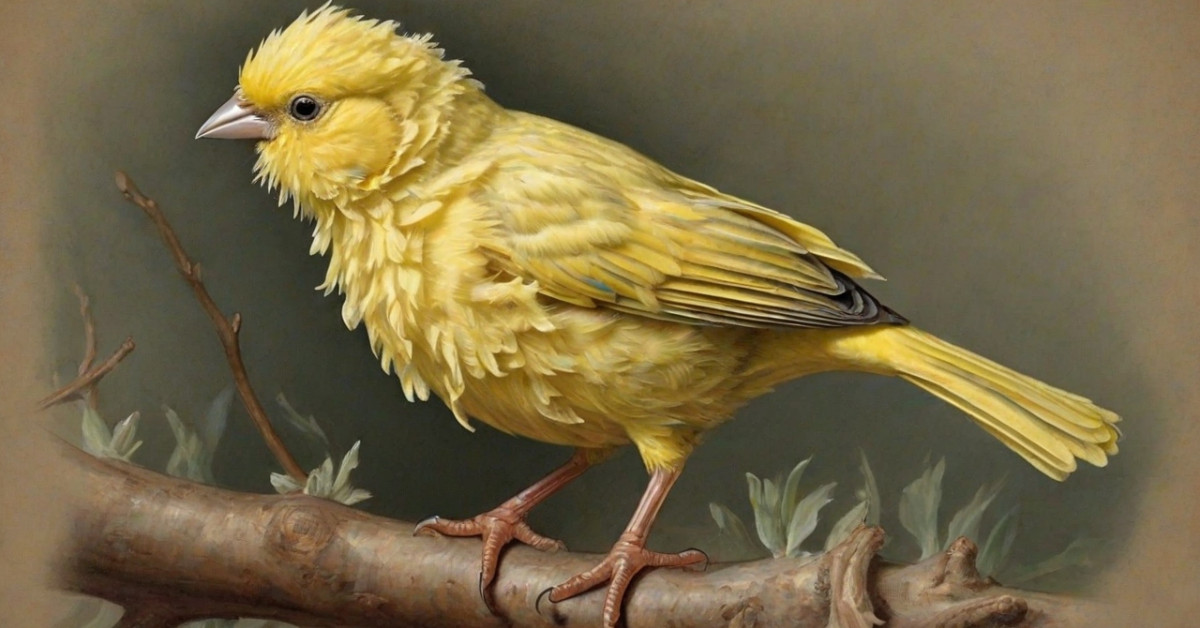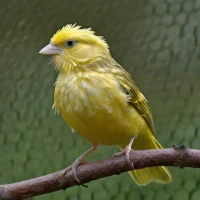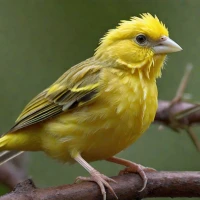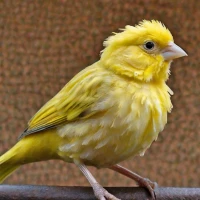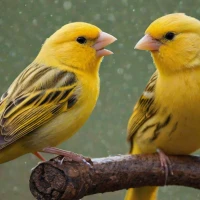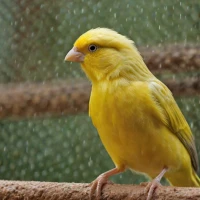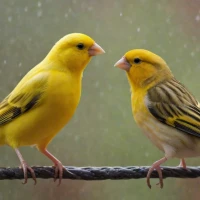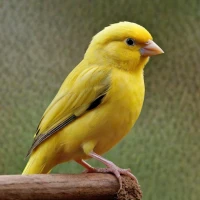The Frilled Canary: A Deep Dive into This Enchanting Bird
Picture this – a sunny afternoon, Dad insisted that we visit the local bird festival. The scent of fresh grass filled the air, mingling with the sweet notes of bird chatter. As we wandered from booth to booth, I caught sight of a little bird that seemed to stand out from the crowd, its feathers forming elegant curls that reminded me of ornate lacework. That’s how I first encountered the frilled canary. When we brought one home, it felt like we had added an eccentric yet lovable family member.
A Brief History of the Frilled Canary
Frilled canaries have a unique origin story. Initially bred in the Netherlands and Belgium, these beautiful birds, with their distinctive curly feathers, have won the hearts of bird enthusiasts worldwide. You might not know that frilled canaries are a result of selective breeding of different canary species to achieve their unique appearance. 🤯 Isn’t that fascinating? While their exact origin is a bit fuzzy, some say they’ve been around since the 18th century!
An Array of Stunning Varieties
From the Parisian Frill with its extravagant feather arrangement to the sleek and slender Dutch Frill, there’s a variety to suit every aesthetic preference. When I first laid eyes on the Parisian Frill, I was mesmerized…Each feather seemed intentionally placed, as if the bird had just walked out of a high-fashion runway. 😍
Characteristics and Temperament
While these birds might look delicate, they’re surprisingly robust! The frilled canary is generally known for its amiable and lively nature. They enjoy singing, and their melodic tunes can bring a house to life. I remember once we had our frilled canary singing in harmony with my brother’s guitar practice – a symphony of sounds that became our Saturday morning tradition.
Unique Feather Formation
The frilled canary’s defining feature is, of course, its feathers. These form intricate curls and frills that can make each bird look like a work of art. Their feathers naturally curve due to genetic traits, though sometimes, environmental factors can enhance this effect. This feather formation not only varies among individuals but also undergoes changes throughout the bird’s life. Random fact: Did you know that the appearance of these feathers can be influenced by the bird’s diet and health?
Ideal Habitat
Creating a suitable environment for your frilled canary involves more than just throwing a box and some seeds together. These birds thrive in spacious cages that allow them to stretch and flutter about. A friend of mine, Sarah, went all out – she set up a massive aviary, complete with little perches and climbing branches. Her frilled canaries zipped joyfully from one perch to another, chirping away contentedly.
The Importance of Diet
A balanced diet is key to maintaining those beautiful feathers. High-quality seed mixes, fresh vegetables, and occasional fruit treats keep them in top shape. I remember being grossed out at first, but now it’s quite routine to chop up veggies for our little feathered friends every morning. Also, did you know these birds love the occasional boiled egg? It gives them an extra protein boost, crucial during moulting periods.
Health and Well-being
Just like any pet, frilled canaries require regular health check-ups. It’s paramount to watch out for signs of illness – like dull feathers, lethargy, or changes in their chirping patterns. Our family vet once explained that frilled canaries are especially prone to respiratory issues due to their unique feather structure, which can sometimes trap dust and dander. Regular cage cleaning and proper ventilation are non-negotiable.
Breeding Frilled Canaries
Breeding these birds is an art unto itself. Not every pair will produce offspring with the characteristic frizz. Our first breeding attempt felt like playing the lottery – each egg was a hopeful ticket. While some chicks hatched with perfect curls, others sported more conventional plumage. It’s essential to note that the breeding process requires patience and a bit of know-how.
Training and Socialization
Believe it or not, frilled canaries can be trained! They respond well to positive reinforcement, and with a bit of patience, you can encourage them to perform simple tricks or come to you when called. Our canary once learned to perch on my finger after just a few weeks of gentle coaxing – an experience that made me feel like a proud parent.
Preparing for Competitions
Frilled canaries often steal the show at bird competitions. My uncle Joe, a seasoned canary enthusiast, once took his prized Parisian Frill to a local show. The preparation was no less intense than that for a beauty pageant! Proper grooming – gently misting the feathers, ensuring a balanced diet, and giving the bird ample rest – was all part of the ritual.
Common Issues Faced by Frilled Canaries
While they’re generally hardy, frilled canaries can face a few challenges. Feather plucking, for instance, can be a sign of stress or health issues. Once, we dealt with this by installing new toys and making some environmental adjustments, bringing our little friend back to its playful self. Also important: Keep an eye out for mites, which are notorious for causing discomfort.
Providing Mental Stimulation
These birds are bright and curious. Engaging their minds with toys, puzzles, and varied perches can keep them entertained and happy. I remember once crafting a little maze for our canary using popsicle sticks – watching it navigate the tiny labyrinth was an absolute delight!
Social Needs
Frilled canaries, like many birds, are social creatures. They thrive on interaction, both with humans and fellow birds. Providing them with companion birds can enhance their quality of life, although it’s essential to monitor initial interactions to ensure they get along.
A Day in the Life of a Frilled Canary
Imagine waking up to a vibrant melody – that’s how a day with a frilled canary often begins. Their daytime consists of playful chirps, feeding frenzies, and delightful aerial displays. Our frilled canary would always have a midday siesta, fluffing up its feathers and perching snugly on its favorite branch.
The Joy of Owning a Frilled Canary
In closing, owning a frilled canary has been a transformative experience for me and my family. These birds bring a unique blend of beauty, song, and companionship. Their presence is a constant reminder of nature’s artistry, offering a daily dose of joy and serenity.
Overall, caring for a frilled canary is both a privilege and a responsibility, but it’s undoubtedly worth every moment. Thanks for reading and I hope you found this dive into the world of frilled canaries as fascinating as I do. Stay chirpy! 🐦💛
